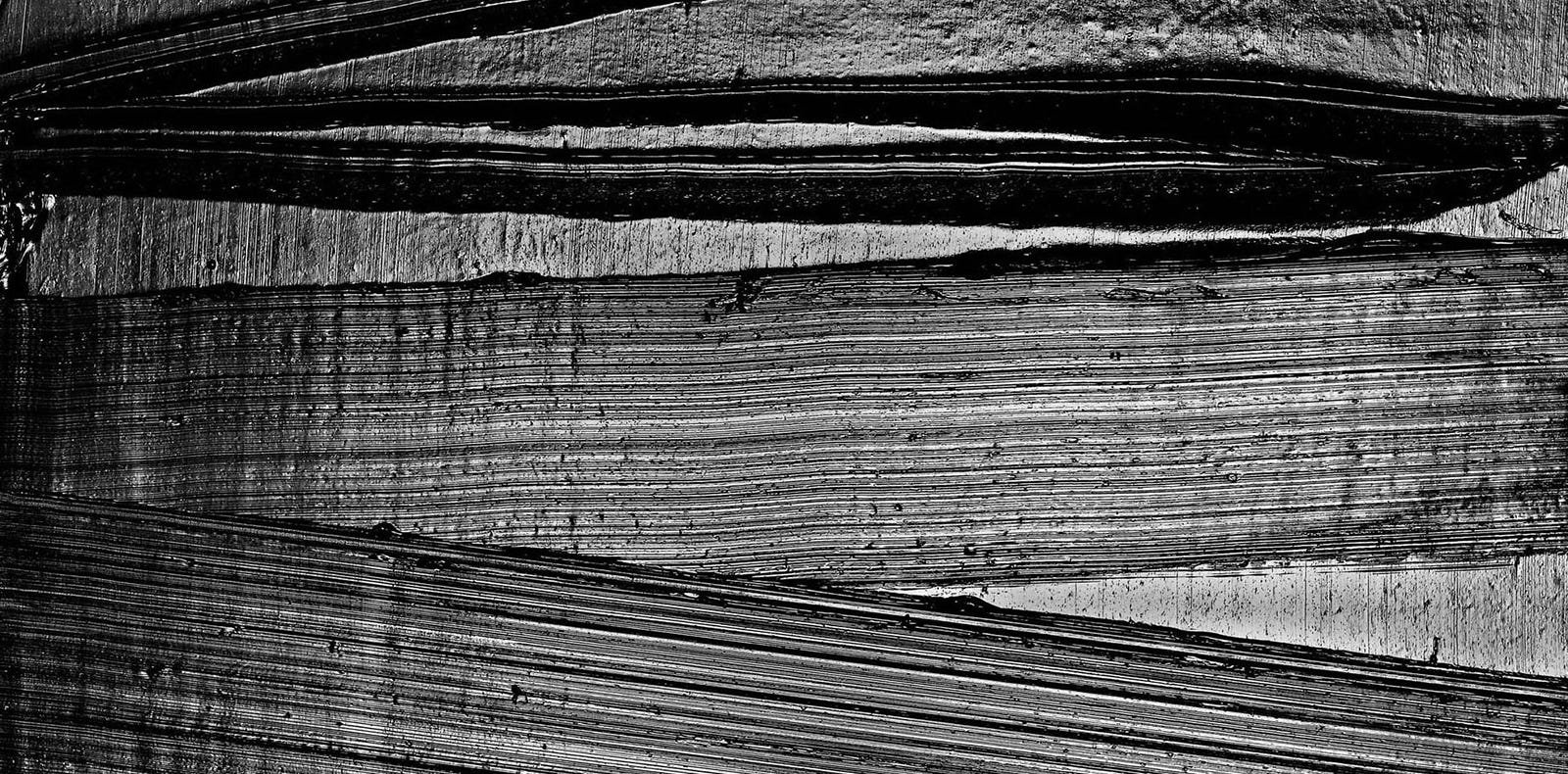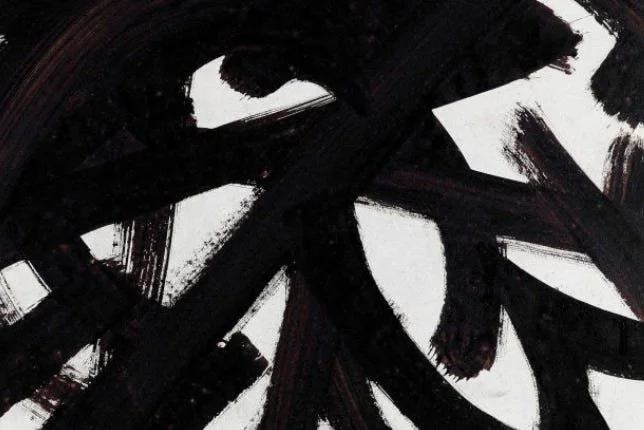Thriving with Limitation
The value of self-imposed constraints in a limitless world
Pierre Soulages didn’t care about earning a living. For him, life was about living—and that meant painting. As an artist, he saw possibility where others saw problems. And we can all learn a little from him.
Soulages, known as "the painter of black and light," is a world-renowned French artist known for creating some of the most fascinating, minimalist, abstract art in the 20th century. Soulages's work, associated with the "Art Informal" movement, has garnered comparisons to esteemed artists like Rothko and Morellet. His artwork commands prices ranging from millions to tens of millions of dollars. He's well known for the monochromatic palettes he uses to evoke a sense of depth, energy, and mystery in his artwork. But what's most impressive is not his education, background, or early work — it's his approach.
As a young artist, Soulages found the business of art quite complex. He often felt overwhelmed by choice — materials, colors, subjects, it was all too much. In 1979, he made the radically divergent choice to reduce his palette to one hue: black. He coined this style "outrenoir" or "beyond black" to simplify his work and set him on a path as a renowned artist.
His extreme discipline gave him endless freedom.
Harry Cooper, the director of modern art at the National Gallery of Art in Washington, once said that Soulages "thrived with limitation," by deliberately limiting his color palette. Instead, he directed his attention to the remaining elements: "Light, texture, scale, shape, direction of stroke."
He became a master of self-imposed limitations.
Rather than overwhelming his canvas with countless possibilities, he adhered to constraints that enhanced his creative focus and discipline. These limitations challenge him to push the boundaries of his chosen elements and techniques, resulting in his work's distinctive and influential aesthetic. The limits didn’t hold him back; they set him free.
We can learn a lot from Soulages. Whether you’re thinking about starting something, building something, or continuing something, constraints are a way to keep you grounded—they allow us to thrive with limitations.
The Value of Constraints
At work, school, and in life, we’re told to push boundaries and think outside the box. But creative thinking requires a certain amount of practicality, or at least a connection to reality. We need the box to think outside of it.
This was one of the first lessons I learned while studying architecture.
When receiving prompts for architectural projects, designing something interesting, unique, or fun was easy. But without constraints, the design was nothing more than a concept. Building codes, budget requirements, zoning, etc., all interfere with the creative process. But over time, I learned that the constraints forced me to think more, be better, and push myself.
We’re all working with constraints, and the most creative leaders and creators understand that constraints are a helpful hurdle, not a burden. Constraints help us in many ways, including:
Focus: constraints act like bumpers on a bowling alley lane; they keep you from going off track. By defining boundaries, you eliminate distractions and are forced to find solutions within your constraints instead of wandering aimlessly.
Creativity: paradoxically, constraints fuel creativity. Constraints require us to stretch our minds to find creative solutions or unconventional approaches to break through our limitations. Further, they force us to be more resourceful and inspire innovation.
Consistency: not only do constraints drive creativity, they also enforce a certain amount of consistency and efficiency. Limiting your palette reduces the potential distractions that inhibit your ability to focus on what's important.
Uniqueness: it's harder to stand out when everyone uses the same tools. Creative expression is enhanced by the limited factors in colors, materials, techniques, voice, etc. Constraints help shape identity.
Growth: constraints—those dauntless companions—beckon us to embrace new skills, capabilities, and mindsets. In their audacious grip, our minds stretch to unfathomable horizons, enabling us to ascend to loftier summits of accomplishment. Thus, through these very constraints, our potential for growth blossoms, vibrant and profound.
Overall, constraints create opportunities for us to thrive in new ways, even if we don't initially see the benefit. They encourage exploration, ideation, focus, and efficiency, ultimately leading to better outcomes.
Optionality Limits and the Art of Self-Editing
Life's most difficult challenge is embracing our limitations without suppressing our creative capacity. Extraordinary results are forged in fire.
But learning to limit ourselves is challenging. As children, we strive for the freedom that we believe adults have; the “do what I want, when I want it” mentality. Without discipline, life succumbs to chaos. It is through discipline that freedom is found. To reshape your life, embrace the power of setting and creating limits. Here are a few lessons I've learned in embracing constraints:
Reframe Constraints to Challenges - the good ol’ "Do More with Less."
Instead of perceiving our constraints as blockers, embrace them as challenges. Leverage your ambition and determination to find creative, resourceful ways to do more with less. Maximize your effectiveness, and increase your leverage. You'll soon realize that the challenge is the goal; the outcomes will follow.
Define Hard and Soft Constraints - barriers are not boundaries.
I’ve learned to differentiate between “hard” and “soft” constraints. Hard constraints refer to fixed limitations that must be strictly adhered to, leaving no room for deviation. For example, in architecture, these are building codes and zoning requirements. These limitations define the boundaries that creators must operate within.
In contrast, soft constraints are more flexible and allow for a certain degree of adaptability and interpretation. Soft constraints are boundaries that sit outside the hard constraints, acting as a second layer of creative constraints. In architecture, these might be material and/or color palettes. If you need to, soft constraints may require some flexibility, but the goal is to keep the soft constraints in place by default.
Experiment with Lots of Ideas - not every combination works; keep trying.
Experimentation is crucial for the creative process, and artists often explore numerous ideas to uncover new possibilities. Soulages was a master of experimentation. His ability to hold onto his work loosely was unmatched. If a canvas wasn't working, he rolled it up and set it on fire in the garden. He didn’t continue with bad work or work he didn’t enjoy.
“It’s what I do that teaches me what I’m looking for.”
Soulages understood that creative exploration involves embracing both successes and failures. Creativity often thrives in an environment that encourages risk-taking. Step outside your comfort zone and be willing to take calculated risks within the constraints. Embrace the opportunity to push boundaries, challenge conventions, and explore uncharted territory.
Explore Collaboration and Diverse Perspectives - get out of your own head.
Engage with others and seek diverse perspectives when faced with constraints. Collaborating with different individuals encourages fresh ideas, unconventional thinking, and varied skill sets that help overcome limitations and stimulate creativity.
Remember, creativity flourishes when we have to navigate within limitations rather than having complete freedom. By reframing constraints as catalysts for innovation, you can harness your creative potential and transform limitations into a springboard for original and imaginative solutions.
Whether you're running a business, creating content, managing a team, or just trying to live a more fulfilling life, constraints are the filtering mechanisms in a chaotic world. There's always too much information. We're constantly bombarded with content, data, and ideas — life is a flood of information. We lament the abundance of choice and loathe the lack of focus. Our job, if you will, is to learn to limit—to limit:
what we pay attention to,
what we spend time on,
what we absorb,
what we worry about,
what we need.
Soulages realized that where some see black as the absence of color, he saw a way to focus, innovate, and challenge. The color black represented the absence of the unnecessary, reducing the unnecessary. The color black presented an opportunity to be an empty vessel, lacking the hues that imbue specific meaning or direction. It's untainted and undisturbed. It is the work that gives it color.
How can you find ways to give your work color?
How can you use constraints to illuminate the work of your life?
How can you find the light within the darkness of a clouded mind?
If you could only paint three strokes, what would you paint?
Pierre Soulages, Walnut shell on paper, 1949

